
On July 14th, a celebration event was held online to mark the completion of the Muslim World Manuscripts digitization project: Celebrating the Manuscripts of the Muslim World Project (2018-2021).
Over the past three years, the Free Library of Philadelphia, the Columbia University Libraries, the University of Pennsylvania Libraries, and a number of other Philadelphia partners (Bryn Mawr, Haverford) have worked together to make their collective holdings of Islamicate manuscripts and Mughal paintings available to the public online, under a grant from the Council on Library and Information Resources (CLIR) Digitizing Hidden Collections. Thanks to this funding grant as well as the hard work of many staff members, students, and faculty across these institutions, the project is complete! Some 826 paintings from the Mughal period and 684 manuscripts covering more than 900 years of cultural production across four continents are now available online to researchers across the globe through a multitude of portals, on the University of Pennsylvania’s OPenn site, the Columbia Library Catalog CLIO, WorldCat, the Internet Archive at Columbia, and at other institutions.
There is much to celebrate here: the project has been transformative on many levels, and it questions our practices around digitization, preservation and access, and expands our understanding of how we describe, collaborate around, and engage with our collections. In fact, we still have a lot to do to move our international collecting practices and services toward the center of critical librarianship in North America, to connect our privileged North American positioning and collections with the Global South, and with the cultural communities from which the collections we hold originated, but this project can count as a start in reckoning with this challenging landscape. Indeed, the collaborative work around our distinctive international collections exemplified by this project is timely and much needed, as these collections– often comprised of cultural heritage and primary sources– document and represent diversity of ethnicity, creed, language, gender, geographic place, and political perspectives, many of which are not always appreciated or heard in our privileged North American scholarly landscape. The project explicitly connects our area studies practices to our DEI values and goals, and works to de-center colonial divisions of knowledge production within the academy. The project’s main aim (and its major success) is to support Islamic Studies within a decolonial context of knowledge production. The project’s name was coined by Dr. Manan Ahmed, Associate Professor of History at CU, and he explained to me that “the choice of the name ‘Muslim World’ was to decenter (colonial) geography as the main way of seeing knowledge production, and to demonstrate the diversity of the Muslim traditions. The collections are largely in Arabic, Persian, Sanskrit, Turkish, he said, but also in Coptic, Avestan, Tamazigh—The mss. come mostly from Muslim traditions and cultural practices, but also include various traditions, languages, religious and cultural groups, all parts of the Muslim world at various historical moments.”

On a purely practical level for us at CUL, one of the many achievements of the project is that a hidden collection at CUL, formerly lingering in the stacks and with only minimal descriptions, is now accessible and has been partially described, cataloged and digitized. In three years, approximately 357 manuscripts have moved from the card catalog to full description and full online access, and are currently being researched, studied, taught and engaged with. Also significant on the conservation front, is the fact that some manuscripts have been stabilized, rehoused, foliated, and cleaned. (In fact the CLIR grant did not allow for any conservation, so this conservation work was done by the CUL staff or by contractors and was supported by the Libraries and/or by other independent grants secured by CUL.)
Perhaps most important is the collaborative mindset that displayed itself at the various institutions throughout the project. Workflows were developed and shared across institutions and across units within institutions. Perhaps most noteworthy here is the highly collaborative metadata workflow that was established. Catalogers and subject experts at Columbia and at UPenn (most notably Peter Magierski, Matt Haugen and Kelly Tuttle) came together to chart workflows with the students. This was a way to allow students to hone research skills, encounter manuscripts without feeling intimidated, familiarize themselves with primary sources in their field of study, and use material culture as an entry point into intellectual and social history of the Muslim worlds. Collaboration also allowed for complementary collections to be uncovered and consolidated, thus allowing for new modalities of research as well as for more comprehensive education in Islamic Studies. As our colleague Kelly Tuttle, the Cataloger for the project at UPenn put it in a recent interview: “The main three collections in this project are each so different in their focus that working on cataloging them together has been both a real joy and a great education in Islamicate manuscript studies” (Hyperallergic, Summer 2020).
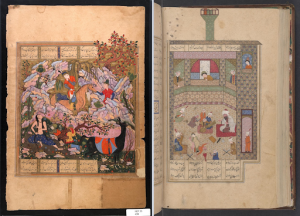
Five institutions in North America, each holding Islamic Studies collections which have been hidden and under-utilized for a long time, have come together to uncover these collections and to advance Islamic studies collectively and strategically. In significant ways, the project has lived up to what Dan Hazen and Deborah Jakubs stressed in a white paper of 2013 regarding the need for new perspectives and approaches to scholarly communication. They write: “Cultural expression, scholarly communication, and data are moving toward new digital modalities of creation and use. The scale of meaningful activity in support of these shifts has clearly surpassed what libraries and their institutions can accomplish on their own. […] New perspectives and approaches are essential as the entire scholarly community addresses this emergent context. We have both the opportunity and the responsibility to develop a coherent strategy to advance international scholarship.”
This project is also groundbreaking in the sense that it has sought to establish networks of engagement with our user communities from within the digitization project rather than as an afterthought. The focus on engagement at CUL with the collection and with our users around this project derives from a number of considerations:
First of all, we were very conscious of the fact that digitization projects within libraries in general have traditionally been conceived of as primarily about access and preservation, with learning, teaching and engagement coming afterwards at the completion of the project. We wanted to re-think this and consider what engagement could look like from within a digitization project throughout its complete arc: we realized that doing so would permit a clear reckoning with the sometimes forgotten fact that digitization projects lie at the nexus of a number of ethical and value-based decisions: What should be digitized? Who should describe the material? In what ways should it be described? When and how should the community of users have access to the material? How are priorities set and funding sought? Against the backdrop of these very basic questions, others quickly appeared, in large part because the material we were dealing with did come from an underrepresented perspective within the bigger academic ecosystem. Among them were some ethical questions, many of which were inspired by the Canadian Archivists’ Code of Ethics): How can we allow intellectual, cultural and scholarly value (rather than practical and project management considerations) to guide our preservation and access policies and workflows? How can the material be described in an inclusive, sensitive, and accurate way, and in ways in which communities of origin for the material at hand would feel comfortable with? How can we foster a sense of belonging and allow users to see themselves represented in the library’s collections? How can we share our expertise and knowledge, and remain open to new insights into records and archival and preservation work? How can we contribute to students’ success and make the project a learning and growth opportunity for them?
In other words, we recognized the need to listen to all the echoes in the garden, to borrow an idea from Edward Said and a metaphor from George Eliot: “No one today is purely one thing. Labels like Indian, or woman, or Muslim, or American are not more than starting-points […] quickly left behind. Imperialism [‘s] […] worst and most paradoxical gift was to allow people to believe that they were only, mainly, exclusively, white, or Black, or Western, or “Oriental”. [….] Survival in fact is about the connections between things; in Eliot’s phrase, reality cannot be deprived of the “other echoes [that] inhabit the garden”(Edward Said, Orientalism)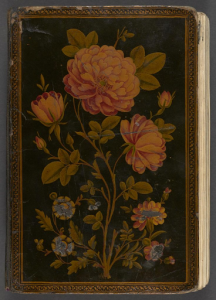
To be able to focus this way on engagement, a number of resources needed to be on hand: first and foremost committed faculty and students. Indeed, the impetus behind the project on our end came from students who had organized a conference around the mss collection in 2017 and who were among the first champions of such a project, writing (along with faculty) letters to the Libraries in support of making this hidden collection accessible and visible. Enthusiastic faculty, too numerous to list individually, also saw the pedagogical opportunities the project afforded and gave it their backing. We also had a great digitizaion, cataloging and subject expert team, whose long experience with digitization projects and solid workflows permitted subject experts in research support and public service to devote time to engagement with the project.
We also faced many challenges, some of which made the engagement with the collections and users even more worthwhile and meaningful. First of all, we were– and still are– operating within a general academic ecosystem of cultural hierarchies in regard to center and periphery. This is especially true for Islamic Studies in particular and for our international collections in general, in part because of multiple erasures and the “distractions” that cultural hierarchies continue to impose or enable, often unwittingly.
 For many items in the collection, the prior lives and the contexts within which they operated as vehicles of learning and knowledge production within their cultures and knowledge production circles, were hidden, erased, or under-studied (and under-valued). One such erasure was the important, indeed foundational status of a great part of the Islamic manuscript collection, namely the Smith and the Plimpton collections, which was one of the main pillars leading to the establishment of Columbia’s Rare Book and Manuscript Library in the 1930s. (A Columbia report from 1911 notes that: “Curiously enough our Oriental collections are relatively speaking the most distinguished among our library collections: we have many hundreds of Oriental manuscripts of exceptional distinction— manuscripts that would occupy a place of honor even in the British Museum” [Columbia University Quarterly, 1911]. What was then a “curious” fact would soon become a forgotten one.)
For many items in the collection, the prior lives and the contexts within which they operated as vehicles of learning and knowledge production within their cultures and knowledge production circles, were hidden, erased, or under-studied (and under-valued). One such erasure was the important, indeed foundational status of a great part of the Islamic manuscript collection, namely the Smith and the Plimpton collections, which was one of the main pillars leading to the establishment of Columbia’s Rare Book and Manuscript Library in the 1930s. (A Columbia report from 1911 notes that: “Curiously enough our Oriental collections are relatively speaking the most distinguished among our library collections: we have many hundreds of Oriental manuscripts of exceptional distinction— manuscripts that would occupy a place of honor even in the British Museum” [Columbia University Quarterly, 1911]. What was then a “curious” fact would soon become a forgotten one.)
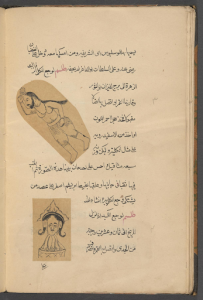
We also needed to engage and teach about the field and the collection from within, in a rooted way and non-defensively, so as to try to reduce the chances of being “distracted.” As Toni Morrison put it: “The function, the very serious function of racism is distraction. It keeps you from doing your work. It keeps you explaining, over and over again, your reason for being. Somebody says you have no language and you spend twenty years proving that you do. Somebody says your head isn’t shaped properly so you have scientists working on the fact that it is. Somebody says you have no art, so you dredge that up. Somebody says you have no kingdoms, so you dredge that up. None of this is necessary. There will always be one more” (Toni Morrison, “A Humanist View”).
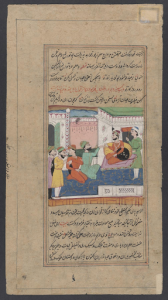
So what did we do to address this challenging context? We came up with an intellectual engagement plan, and we partnered with the students. The students became the driving force for the engagement and we were their support. We knew that the students, as one meaningful user community, would learn a lot through engaging with the collection from within the digitization project, but that they would also teach us a lot. We were not disappointed: engagement yielded some learning as well as some teaching, in a recripocal manner, supporting critical pedagogy. The students acted as curators, writers, editors, researchers and catalogers. Peter Magierski, Matt Haugen and Kelly Tuttle cataloged the mss with the students and used this opportunity to help the students build subject expertise, and use codicology and cataloging as a way to immerse themselves within a discipline, and address material culture as an intellectual and social history. Within this engagement plan, the students acted as curators, e.g. the impressive physical (then online) exhibit entitled: “In the School of Wisdom: Persian Bookbinding ca 1575-1890″ curated by Matthew Gillman around Persianate bindings. There was a wonderful codicology workshop by Kelly back in September 2019 that was fully subscribed and where we had to turn down students. The feedback came back to us with a resounding applause: “we need more of these workshops the students said. We need them on a regular basis. They are essential to our learning”. And we were considering a continuation of these workshops, but then the pandemic hit. So the story is definitely to be continued there in terms of building expertise that is rooted in a discipline. There were multiple interviews/blog posts where we engaged with the students around their research and what they found interesting about the collections. They pointed us to new items in the collection, researched their significance and shared their learning and thinking with us in a series of posts on the Global Studies blog. There was also a course devoted to the Muslim World manuscripts, namely Prof Tunc Sen’s class with the same name. The class incorporated weekly assignments where students were asked to comment on a reading or on a manuscript’s material features to achieve some conceptual learning around ideas central to Islamic intellectual history of the book. Examples included the idea of authorship, of the colophon and the understanding of who is an author, a shared author, a copier, and/or a student who memorized a master’s lecture, a scribe who took that down, a commentator who wrote in the margins– all these “authors” complicated beautifully the notion of authorship within this tradition and highlighted the polyvocality of authorial authority within the field. The learning achieved there through the collection and through delving into material culture and the critical study of material culture as intellectual and social history clearly astounded me when I attended the class on a weekly basis last fall. And students turned into editors and researchers and writers such as is witnessed by the special issue of the Philological Encounters,Volume 5 (2020): Issue 3-4 (Nov 2020): Making a Hidden Collection Visible: Columbia’s Collection of Muslim World Manuscripts, edited by Zeinab Azarbadegan and Mohammad Sadegh Ansari.
.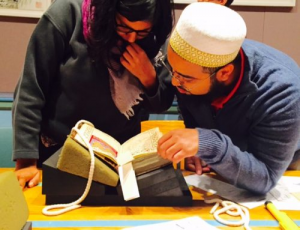 In conclusion, the achievements of the project were many, and there were also some lessons learned. I cite here a few such lessons learned that will hopefully continue to make this project inspirational:
In conclusion, the achievements of the project were many, and there were also some lessons learned. I cite here a few such lessons learned that will hopefully continue to make this project inspirational:
Connect, and don’t go the digitization route alone: collaborate, establish common inter-and intra-insitutional workflows!
Don’t forget to think about and locate support and finds for conservation within your digitization project!
Think of your digitization project as a site of engagement, of learning and teaching with your various user communities, from within and along the arc of the digitization project, and not as an afterthought!
But most of all, digitize, preserve, teach and engage with your collections, users and digitization project from within, and without distractions! The garden has many echoes, and with some attentive listening, they can all bloom!
For inquiries regarding the Muslim World Manuscript project at Columbia, please contact RBML: Jane Siegel: Librarian for Rare Books & Bibliographic Services: jane.siegel@columbia.edu; Peter Magierski:The Middle East and Islamic Studies Librarian: pm2650@columbia.edu, or Kaoukab Chebaro: Global Studies, Head: kc3287@ columbia.edu
Kaoukab Chebaro, Global Studies, Head, Columbia University Libraries